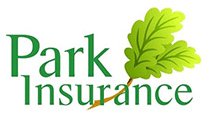2017 was a year that saw average costs for motor insurance shoot up to £484. One of the reasons includes the rising costs of car repairs, which has jumped by 46% to an average £1,944 in the last four years. But it’s not all doom and gloom. New technology is on the horizon that could help keep your car, and your home, safer and could reduce premiums. Read on for our top three insurance trends to look out for in 2018:
1) Biometrics
The high costs of fixing our increasingly automated car may be one of the factors that are forcing the price hikes in insurance. But brand new technology could also be the answer to bringing the costs back down again. One of the newest trends to be making waves in the insurance industry is biometrics.
Biometrics is the term given to the technology that connects your vehicle to you personally. Using fingerprint or retina recognition, it provides a new layer of security, just like that used in smartphones. Unlocking your car door using just your thumb can make life easier by eradicating the need to find your keys. It also makes your car a lot harder to steal. And a car that is harder to steal is going to be cheaper to insure.
Biometrics in the rear view mirror can also be used. It could be programmed for the engine to cut out if an authorised driver is not in the driving seat, further enhancing security. And it could also be used to record driver use and monitor driver behaviour.
What benefits will this bring?
The benefits of retina recognition in reducing your insurance premium could be two-fold. On one level, it could be used to track your eye movements to detect safer driving. For example, how often you check your mirrors. This information could be fed back to your insurance company so they can build an accurate picture of your driving safety. This would enable a more personalised insurance quote to be prepared.
On another level, it could allow for more insurance policies to become more fluid. This could help save money where several people drive one car. For example, it could record the number of times a learner or novice driver is behind the wheel. That would allow for a more accurate cost for insurance, that fluctuates depending on the age and experience of the person who is driving, to be created. This could also prove beneficial for commercial fleet managers.
But of course, it works both ways. Whilst biometrics could help reward safer drivers with lower premiums, perceived riskier driving techniques could see insurance premiums swing the other way and increase.
2) Telematics creating a more tailored picture of the insured risk
Telematics has been on the insurance radar for some time. Also, known as black box insurance, it can mean savings of up to 25% for careful younger drivers. And it can also play a valuable role in helping to encourage safer driving. It’s not just for younger drivers. Careful older drivers are also turning to telematics as a way to reduce insurance costs.
With telematics, you have a box fitted to your car, which then records things like speed, time of driving, and the type and frequency of braking. Your insurance company will use this information to build a more individual picture of your driving style and likely risk of being involved in a collision. This data allows for a more personalised insurance premium to be generated. So, if you drive safely and mostly during quiet times of the day, you could see your premium reduced compared to the ‘average’ costs. However, as with biometrics, this information can also be used to push up prices of insurance premiums. If you drive erratically at night, which is considered a riskier time to be on the road, your premiums could end up higher.
Last year the British Insurance Brokers’ Association (BIBA) revealed that there were 750,000 live insurance policies based on telematics. This represents an increase of nearly 25% in a year. Latest figures are likely to be even higher, making this a top trend to consider if you want to lower your insurance premiums and consider yourself to be a safe driver.
3) Smart home for smarter savings
It’s not just tech in the car that is helping to reduce insurance costs. Thanks to the internet of things, our home insurance policies are also being revolutionised by technology.
Smart home devices let you remotely open and close curtains, switch on lights, view what’s going on in your home, and can even sense things like a leaky water pipe or a fire. As well as convenience and comfort, an automated home can raise the alarm when something is wrong. It can stop an issue from getting worse or prevent damage from occurring altogether. That means fewer or lower claims on your home insurance. And that can translate into lower premiums when you come to renew.
This trend may still be in its early stages, but it’s already being used to secure discounts for customers of the USA’s largest insurer, State Farm. As with many things, where the USA leads, the UK and rest of Europe tend to follow.
As well as discounts on premiums just for having the technology installed, there are further opportunities for insurance. Just like biometrics and telematics, smart home technology can help insurers to build a more individual profile of their customers, enabling them to tailor premiums to a more personalised risk.
Smart insurance at smart prices
Find out how more about how these three high tech insurance trends could save you money today. From personal home, car and travel insurance to specialist policies to cover every commercial and business need, call our helpful team on 0117 9556835 or get a quote.

